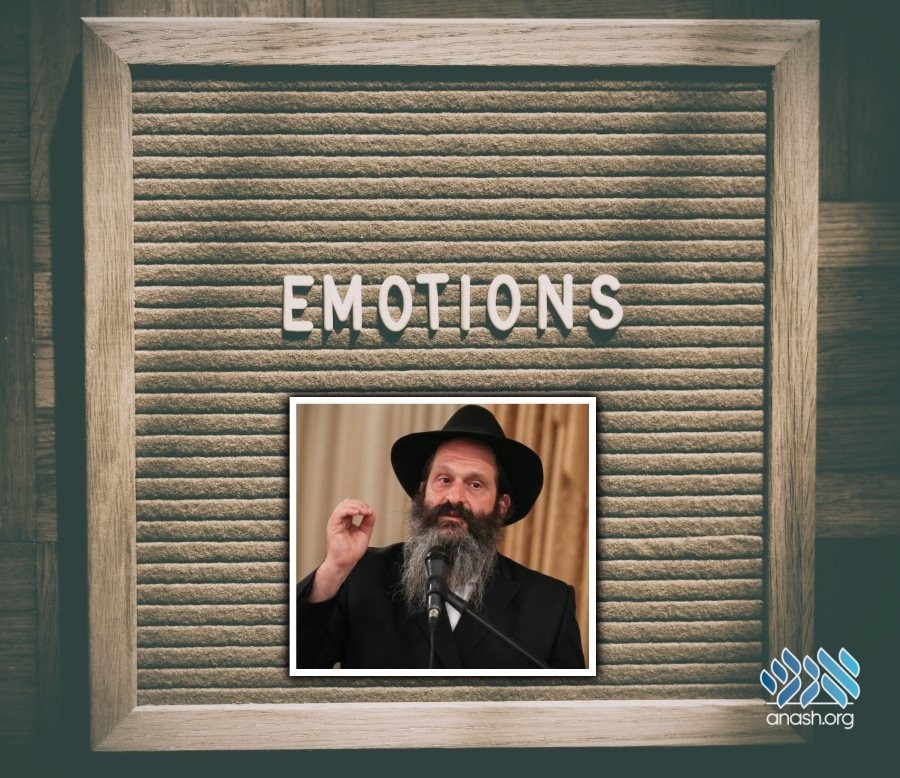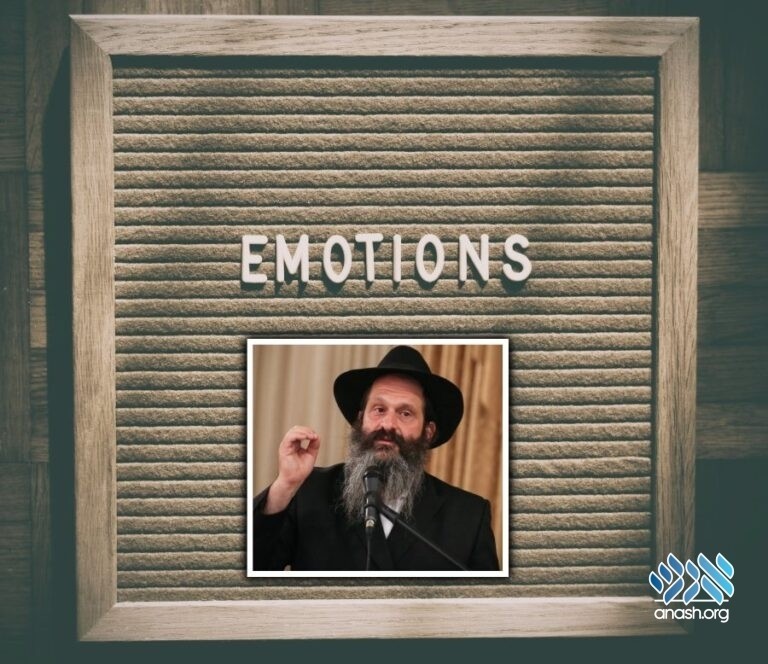כ׳ אב ה׳תשפ״ג | August 6, 2023
Chabad is Concerned With Emotional Health
Article by Rabbi Sholom Mordechai Rubashkin: As a young bochur learning by Reb Yoel Kahn, I was surprised to hear him say that Chabad was concerned with emotional health. What he responded, guides me until today.

Article by Rabbi Sholom Mordechai Rubashkin: As a young bochur learning by Reb Yoel Kahn, I was surprised to hear him say that Chabad was concerned with emotional health. What he responded, guides me until today.
By Rabbi Sholom Mordechai Rubashkin – AlephBeisGimmel.com
Last week was the Yahrzeit of the Rebbe’s Chozer, haRav haGaon Reb Yoel haKohen Kahan a”h.
As a young bochur, I had the zechus to learn from Reb Yoel and hear him farbreng on numerous occasions. His incisive clarity allowed him to cut to the heart of every issue or topic, and he was gifted in expressing the truth of any matter with apt and relatable mesholim. He could make revolutionary insights seem so obvious that the earlier confusion seemed inexplicable in hindsight.
His willingness to raise and address “klotz kashes,” the obvious (often unasked) questions that go to our most basic statements and assumptions, meant that he shared insights on the most fundamental issues, and his wise words have echoed in my mind at many pivotal moments throughout my life.
From the youngest age, Chassidus has been an integral part of my identity, so it struck me like a thunderbolt when he once asked us young bochurim, at a Farbrengen, “What was the Baal Shem Tov’s chidush?” – and I realized that I couldn’t quite formulate an answer.
Reb Yoel didn’t let the silence linger and summed it up in three words: Rachamana liba bo’i – Hashem wants our heart.
The period of Jewish history in which the Baal Shem Tov was sent to us was dark and blood-drenched. Alongside the difficult and demoralizing physical golus, the majority of Yidden – the simple unlearned folk – suffered an even worse exile: a feeling of separation from their fellow Jews and from Hashem Himself.
Yiddishkeit at that time was commonly presented and understood to be comprised exclusively of its lofty intellectual aspects. To be a Yid meant to be well-versed in Torah, as if Hashem was only to be found in the ivory towers of world-class Yeshivos. The good-hearted but unschooled and often illiterate Jewish masses were “Jewish in name only” in the eyes of their respected and learned brethren, who assured them that this was also the view of the Almighty Himself.
These precious, simple Yidden loved Hashem and clung to Him to the point of literal self-sacrifice, but they despaired of any reciprocated love from Him. They felt truly exiled, excluded from what it meant to be a Jew, inadequate and unwanted.
The heilige Baal Shem Tov brought truth and life to these Yidden. He visited their small hamlets and villages, and through stories, mesholim, and words from the heart, he helped them see the truth.
He explained to them how Hashem loves every individual Jew, learned or not, and to an infinite degree – more, even, than a father loves their own child, even an only child, and even one that was born in his old age.
Rachmana liba bo’i. The true meeting place of a Yid and Hashem is in the heart. The pure, simple faith and trust in Hashem, Emunah and Bitachon, the words of Davening or Tehilim read or memorized with great effort and uttered with sincerity and emotion, the sincere love of a fellow Jew expressed in word or deed – these are all cherished by Hashem.
A Yid must do everything he can for Hashem. The Mitzvos must be done, the Tefillos offered, and the Torah learned, all to the best of our ability, but Rachmana liba bo’i. What is most precious is the heart, the emotion, the ahava and yirah, the inner victory over the yetzer hara that is expressed in the thought, speech, or action.
Now, a farbrengen is not primarily about learning new information. It’s about bringing the truth to life: experiencing it, digesting it, bringing it home. Reb Yoel spoke about the Baal Shem Tov and the heart of a Yid until we really got it, and when we really appreciated the essence of what he was saying, he hit us with the follow-up:
The Alter Rebbe, Reb Yoel reminded us, called himself the grandson of the Baal Shem Tov – but aren’t his teachings the diametric opposite? In Chabad Chassidus, the Alter Rebbe focuses on chochmah, binah, and da’as, on the mind and the intellect, not, it would seem, on the heart!
With his trademark inflection and a vigorous hand motion, Reb Yoel asked “Is this the continuation of the derech of the Baal Shem Tov?! Rachmana liba bo’i: is that Chabad or Chagas?”
Growing up in Boro Park, I had seen firsthand the emotional avoda of many genuine and devout Chagas Chassidim. I had to admit: It was a good question! IsChabad really about Rachmana liba bo’i?
The unflinching clarity that demanded the question also provided the answer. “Yes!” said Reb Yoel. With Chabad, he explained, the Alter Rebbe wasn’t, ch”v, changing the center of avoda from the heart to the mind. He was teaching us that the way to reach the center – which, as the Baal Shem Tov taught, is the heart – is through the mind.
In other words, the name Chabad describes the method, not the goal – and the method is important.We don’t have direct control over our heart to transform it through willpower alone. Those who carried the Baal Shem Tov’s teachings forward, teaching the masses how to serve Hashem with their hearts, taught different methods.
Many took the approach we call Chagas. Their avoda is centered around proximity and connection to a Tzaddik, studying inspiring Torah thoughts, and engaging in the actions of passionate avoda to excite the heart. This clearly works, as anyone who has turned on joyful music and felt the boost can attest. It’s also only the external aspects of our heart and emotion and, as such, it’s temporary – as anyone who has eventually turned off the music can attest.
The Alter Rebbe took and taught the approach of Chabad, an avoda which doesn’t just activate their heart in the moment but transforms the heart in fundamental, pnimiyus’dike ways. How? Through the mind. Through chochmah, binah, and daas. We don’t have direct control over our heart, but we have control of our mind – and our mind does control our heart to the point of lasting, transformational change.
Through the Torah knowledge we acquire (limud and chazara) and the disciplined methods of bringing them to life and into our reality by absorbing and reflecting on them (hisbonenus and tefillah), permeated by the darkei haChassidus (farbrengens, aseh licha Rav, knei lecha chaver, etc) we can transform our hearts for the long term, developing and maintaining the sincere love, the true awe, and the midos tovos, the nobility of character, with which we fully serve Hashem in our heart.
This focus on working with the heart has become widespread. Emotional health has become a buzzword, and for good reason. We do well to remember the Alter Rebbe’s teaching, the cornerstone of Chassidus Chabad: The key to our heart and emotions – whether in avoda or in health – is our mind and our intellect.
This, of course, makes the key to our minds and our intellect very important. How do we find the clarity to navigate every situation, where do we find the foundations that provide emotional well-being and the answers to life’s many conundrums? The way to ensure that our mind and intellect has the right answers and is steering us straight and true is not “do it yourself” and not even, as you may have been told recently, ChatGPT.
Our wisdom and discernment – apparent to all – is as it has always been: Our bitul to and acceptance of the truth and clarity of Hashem, given to us in the Torah, Toras Chayim, our source of hora’ah, guidance, in life.
Torah provides strong, solid foundations for living life and understanding and interacting with the world. Its truth and clarity illuminate every situation. What Reb Yoel drove home to us that night is that Chabad is really all about bringing that to our hearts, to our emotions. The main part, the purpose of it all, the active ingredient is not the chochmah or the binah – it’s the daas, the bridge from the mind to the heart.
So don’t leave the truth in the books, or even just in your mind. If you find yourself floundering emotionally – feeling emotions you ought not to feel or in distorted ways or intensities – or if you find yourself listless or unresponsive in situations where you should be on fire, the Alter Rebbe tells you that these problems of the heart are to be fixed by the mind – a mind guided by Torah.
Learn who you really are at your core and what forces and frictions are at work in your heart and soul. Learn what the Torah says about the nature of reality, the challenges you face, and the purpose of your existence. Learn about the strength of your neshama, the meaning of a Mitzvah, the path of Teshuvah.
When that clarity and perception is brought to our heart, with the guidance of our teachers, with personal effort, and with siyata d’Shmaya, we can not only accomplish the true and lasting avoda of Rachmana liba bo’i, but robust and lasting emotional health and well-being as well.
As Chassidim, we don’t look at any pronouncements of Torah or Chassidus as a theory, ch”v. We know they are true, we accept they are true, and they don’t need any endorsements. Still, it sometimes helps people to hear from someone who experienced something firsthand.
In my journey, I went through a lot, and I had to deal with the same emotional turmoil you might feel in those circumstances. I can tell you from personal experience: This is not a theory. It works.
If you want robust, long-lasting emotional stability through life’s many storms, if you want to ignite your neshama and heal your nefesh, if you – like your Creator – are “liba bo’i,” you want an emotional life that is healthy, strong, and rich, follow the path paved for you by the Baal Shem Tov and the Alter Rebbe.


We are causing our own problems when we turn Chabad into some intellectual pursuit. Then we wonder why our youth are turning elsewhere for emotional health…
Reb Yoel is done a great disservice when he is branded a “Chabad scholar.”
Reb Yoel was a wholehearted chossid who was dedicated to the Rebbe with his heart and soul. True, he was gifted with a huge mind, and he used it to know Hashem. But he was not the cold intellectual that some make him out to be, and he taught the bochurim how Chassidus transforms and elevates a person.
Yes 100% instead of pretending like we are all professors.. you allowed to show some emotions.. be nice to somebody or friendly and especially during davening and learning. When we show that there is practicality in what we teach, the kids take it. When we show that it’s abstract they say okay, I’ll find something practical